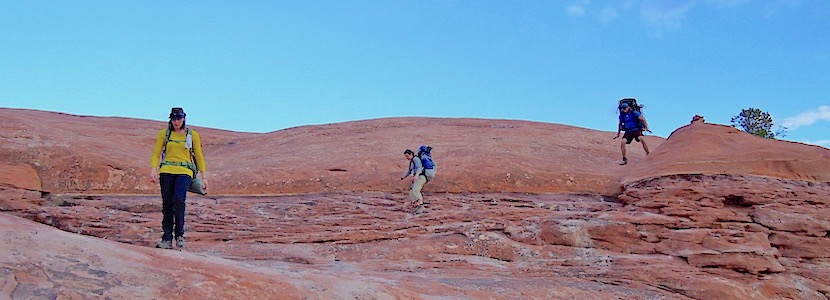
Backpacking With Teens and Tweens
We’ve been backpacking with our now-teenager since he was 9 years old. And I’m talking about real wilderness backpacking in rugged terrain and extreme temperatures where you carry everything you need to survive, not “I did some walking in Europe with a backpack on” backpacking.
I put in 6 years of backpacking as a teenager myself back in the day, followed by an additional 13 years of backpacking as an adult (pre-munchkins). So hopefully that establishes me as reasonably qualified to dispense advice in this area.
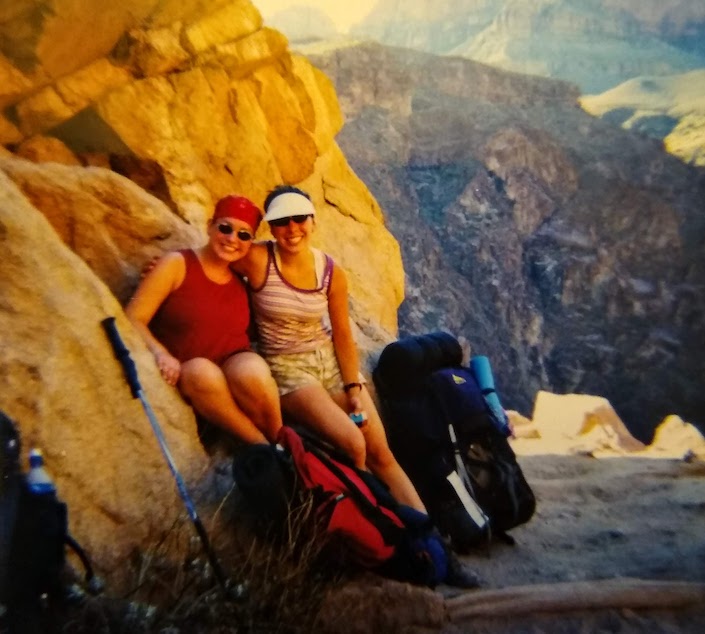
Below are some of our strategies for successful backpacking adventures as a family with teens and tweens.
We’ll start off with our policy on the kids having electronics in the wilderness, because society has lost its collective mind in this area:
No Electronics
Backpacker Magazine’s editors and I apparently disagree strongly on this. I normally really enjoy their articles, but they’ve missed the mark badly on this one.
Their argument is that “forcing kids to leave their phones (while you hike) could be a deal breaker” and that “we may not realize how much our young people connect on social media.”
YIKES, Backpacker.
First of all: To what “deal” are you referring? Are family trips subject to some sort of negotiation in your house? They are not optional in our family, nor is spending time unplugged outside. Our kids don’t get to bow out of family activities or re-arrange everyone’s plans because they’re not feelin’ it. Your parenting shouldn’t be dictated by popular vote, particularly in areas as high-stakes as your kids’ online activity.
Second: Of course we don’t realize “how much our young people connect on social media”, which is exactly why we’re blindsided when we find out that they’re being cyber-bullied, sexting with peers, or arranging meet-ups with adult strangers.
And heads up, Backpacker editors: your kids are vaping. That “thumb drive” is not a thumb drive, and it does not need to go on your backpacking trip any more than your kids’ cell phones do.
I stand firmly by what I’ve written before about cell phones: your teen doesn’t need one at all, and they really don’t need one in the wilderness.
Unplug for a few short days and just be together. You can thank me later.
Related: If you or your teen simply must hike with music or an audiobook, get something like a Shuffle that doesn’t have a screen or internet connection. And no speakers strapped to your backpack, ever. Other hikers do not want to hear your hip-hop garbage blaring all over the trail.
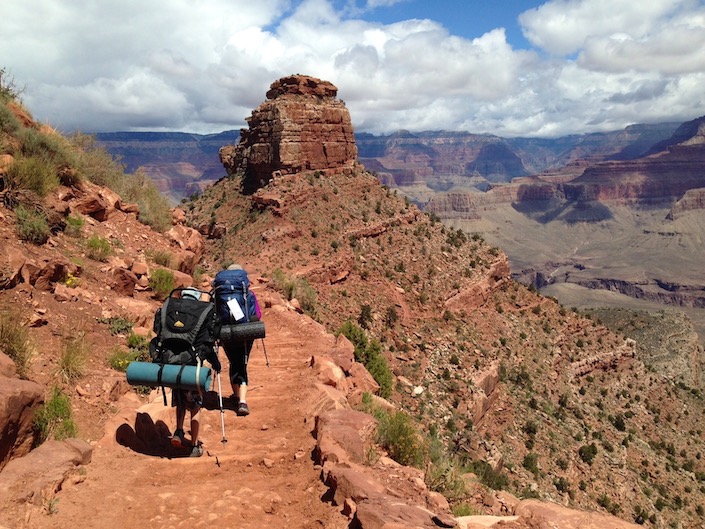
Enough about electronics. Moving on to our policy on bringing friends:
The More the Merrier
Well… within reason.
You don’t want to add people (adults or kids) at random to your adventure roster. “I just ran a half marathon!” is not synonymous with “I currently have the physical ability and necessary gear to do 4 days in the mountains with a huge amount of weight on my back.” Similarly, “Billy is such an athlete – he’s on All-Stars Traveling Sports Thing and they made regionals!” Is not synonymous with “Billy will be fun to backpack with and you won’t have to carry any of his stuff.”
These distinctions are important, and we’ve learned this the hard way. So vet your backpacking crew however you need to before committing to multiple days in the wilderness with them.
You do want as many competent adult backpackers on your trip as you can get. This is helpful for safety reasons when wrangling kids and it’s lots of fun for you.
Teens and tweens also tend to be way more fun and way less whiny when they have a friend or two. Our current rule is no more than one kid per adult (but bear in mind we’re often on pretty advanced trails and routes); adjust to your own comfort level and your group’s needs.
Do check the limits on group size for the wilderness area you’re headed to, and get proper permits in advance if you need to.
And beware of the co-ed teen group. It’s doable, but you’ll basically be running interference the entire time on a Temptation Island version of the Hunger Games. You’ve been warned.
Speaking of warnings, let’s get serious for a sec:
Safety First
If you are an adult and you want to get some of your idiot friends together and wander unprepared into the wilderness and die, that’s your prerogative.
But PLEASE do not make these mistakes with children in tow. Preventable deaths happen year-round out here in the wilderness of the American West.
Oftentimes these things happen on or near popular trails or roads, and they happen despite easy-to-access information and warnings about the dangers present. People (and families) go around posted warnings to the their death at least a few times a year – so often that the news barely covers it anymore. Just last week near one of our favorite hiking trails, a dad decided to take his family around a barrier and signage warning of flash flooding. 3 kids drowned.
The wilderness is not inherently dangerous. Arrogance and stupidity are.
Know EVERYTHING you can possibly know about where you will be backpacking with your kids. Tell a responsible adult who is not going on the trip your exact itinerary and route and stay on it. Arrange to to call that person to check in as soon as your hike is scheduled to be done. Know what your options are in case of a true emergency and share the plan with all adults involved.
Explain to the kids (without going into details that will give them nightmares) what dangers are present and how to stay safe. They can handle it.
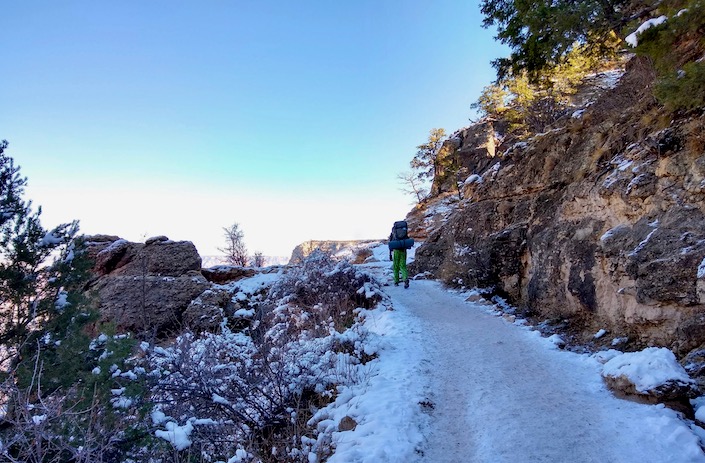
Make a List and Check it Twice
Send your backpacking crew a detailed list of what needs to be packed by each hiker as well as a detailed route description. What supplies are needed will, of course, vary by the duration of the trip, the destination, the expected weather, and the skill of the hikers.
Do a thorough comb-through of all the kids’ gear, particularly if a less-experienced adult helped them pack or they packed themselves. You’ll be surprised at some of the useless things people try to pack and some of the essentials that get missed.
Every hiker should have hiking shoes on their feet and eyes on their backpack as your car pulls out of the driveway. Yes, we’ve been on trips where someone forgot their backpack and/or shoes.
Bring Fancy Gear and Junky Food
No one wants to hike all day only to be faced with a lame dinner like re-hydrated lentils and kale with herbed mushrooms. These things should not be allowed to exist as backpacking meals, because they are a worse option than just shooting and cooking wild birds, but somehow they persist. My theory is that it was an April Fool’s joke at the outdoor supply stores one year, but then a few pretentious hippies bought them and now the rest of us have to move all the freeze-dried kale packets out of the way to get to our Mountain House Chili Mac. But I digress.
On backpacking trips, our teen gets to eat all the delicious treats we don’t stock at home: ramen, trail mix, energy drinks, cookies, those gross spicy chips that smell like feet, etc., as long as he’s carrying all his own food and gear.
This may not be a motivator for your “eating isn’t cool” teen girls or for very small tweens who have yet to hit a growth spurt and legitimately can’t carry a full pack, but it works great for growing teen boys who are made entirely of lean muscle mass and are always hungry.
However, while you can get away with super cheap food on backpacking trips, you do need to hike with gear and clothing that is high-quality and well-broken-in. This will make or break the backpacking trip.
Buy it used, rent it, or borrow gear while your family is getting started in the sport. Once you know what you like, you can shell out for high-end backpacking equipment that will last 10+ years.
For really challenging backpacking trips, we’ve made fancy new backpacking gear the reward. Last year, C earned an ultralight backpacking chair he’d been wanting for knocking out a 3-day hike that ended with 6 hours of sustained uphill (no exaggeration).
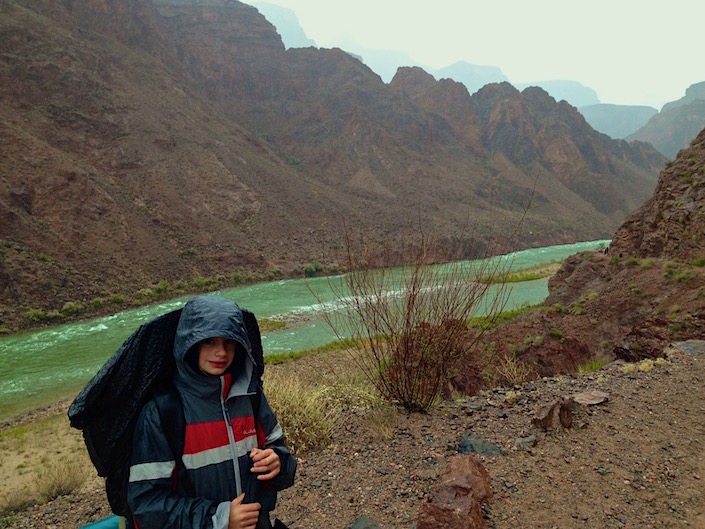
Go Somewhere Fun for Kids
Adults enjoy things like looking at rock formations and sunsets and just sitting around talking. Teens and tweens do not.
Plan your trip so that you are frequently near creeks, rivers, lakes or coast lines. The kids will go nuts playing in the water when they’re not hiking. Not to mention that if you’re near fresh water sources you have less water weight to carry each day, which means happier hikers.
As we discussed above, make sure you are aware of any potential safety concerns at or around your destinations.
Related: Not all wilderness areas allow campfires. Similarly, not all wilderness areas allow dogs, horses, or other animals. There are good reasons these restrictions are in place, and it’s important that hikers respect them. If a campfire or a furry friend is an important part of your backpacking vision, check on the local regulations before booking your trip.
And last but certainly not least:
Expect a Lot
Our kids tend to rise to whatever level we expect them to.
Think your teen is capable of making lunch for themselves, washing their own laundry, and doing a hard-core backpacking trip with you? They probably are. Think they need you to make them a sandwich, wash their undies, and coax them through a mile-long nature walk? You’re almost certainly right.
While I am all for backpacking being fun, as noted above, “fun” should not be confused with “easy”. If backpacking was easy, everyone would do it.
Facing physical and mental challenges in the wilderness is beneficial for kids’ bodies and minds in a way that nothing else is (this is why wilderness therapy works). None of the imitations we can offer kids on playgrounds or at gyms can even come close.
Make sure your teens and tweens get to have outdoor experiences that test their limits and expand their comfort zones. Push them to accomplish things they can proud of that don’t involve a single “like” or participation trophy. They’ll be better for it, and I think you’ll find that you will too.

Did I miss a backpacking strategy or tip that’s working for you and your teens or tweens? Got other questions about how we rock the wilderness with our kids? Leave them in the comments! And thanks for reading!
6 Replies to “Backpacking With Teens and Tweens”
Hey friend! What would be your advice/our first steps on planning our first backpacking trip with kids? And at what age do you think is good/appropriate to introduce them to this activity?
Thanks so much for reading and commenting! Great questions! I honestly think any age is fine if the parents feel ready and are being smart about it. I personally wouldn’t be comfortable with it before age 1, but there are people who backpack with infants and do just fine. Baby J was actually supposed to be on our most recent hike, but the night temps were below freezing and it had snowed over a foot the day before we started, so we decided that would not be super fun for him and left him with his grandparents. His first trip will be next spring – he’ll be 2.5 years old. 🙂 If your youngest won’t be ready for awhile, there’s definitely some value in getting older kids backpacking before their younger sibs. My older brother and I had done some really hard trails before our younger brothers started up, and it gave us a sense of ownership and pride to be able to help them come in to the sport. It’s been really nice to have the time we’ve had with our oldest backpacking, too. There’s a different side to older kids that comes out when the little aren’t around. 🙂 Anyway, as far as specific tips: If you do have a little one who will need a carrier, do some test runs where they are in it for longer periods of time. Practice as a family doing little walks/hikes with big backpacks. Camp in the living room and then in the backyard a couple times to get the kids used to sleeping bags and tents. Have the bigger kids carry packs, but make them super light at first – C only had his favorite stuffed animal, snacks, and water in his pack on his first trip. 😀 Make the first trip just a mile or so from the car so it feels really adventurous for the kids but is no biggie for the adults. Camp by a small creek if possible because white noise is awesome and everyone will sleep better (also kids love creeks). And keep that adult-to-kid ratio high. 😉 Let me know if there’s anything else I can help with! Thanks again for reading! <3
Great post!
Thanks for reading and commenting, Richard! Glad you liked it! 😀
Agree with NO ELECTRONICS! Excellent post!
Thanks M.W.! Yeah, that rule won’t be changing on our backpacking trips! 😀